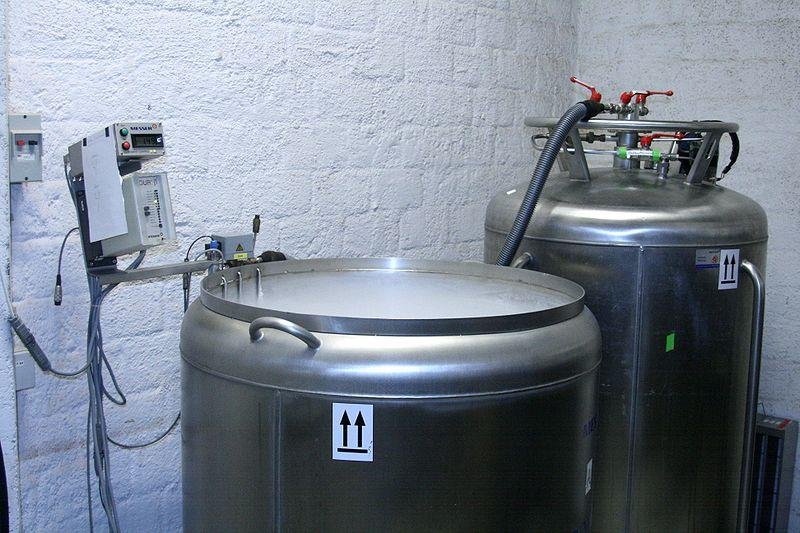Open cryopreservation container connected with a tank full of liquid nitrogen for automatic supply of liquid nitrogen. (CC/International Moss Stock Center/Ralf Reski)
Nick Bostrom, professor of philosophy at the Future of Humanity Institute [FHI] and his co-researcher Anders Sandberg have agreed to pay an American company to detach and deep freeze their heads when they die.
Their colleague, Stuart Armstrong, is instead opting to have his whole body frozen -- a complex procedure that can cost upwards of $200,000.
Bostrom, Armstrong and Sandberg are lead researchers at the FHI, part of the Oxford Martin School where academics undertake research into problems affecting global civilization.
The group noted that there was no research into human cryogennics being conducted at the school, and so they set up life insurance policies to cover preservation upon death.
"It’s a lot cheaper than joining a gym, which is most people’s way of trying to prolong life," said Armstrong, who chose the Cryonics Institute, and pays about $39 per month to cover the insurance policy. He even plans to take out policies for his currently-pregnant wife and their unborn child.
Bostrom and Sandberg have chosen the Alcor Life Extension Foundation based in Scottsdale, Arizona. The company already has 117 patients in cryopreservation, and of these, 77 are ‘neuropatients’, which means they have only preserved their heads.
The process begins when patients are declared to be terminally ill: A cryopreservation team will wait on call for a doctor to pronounce them dead. A machine will then keep blood pumping while the body is cooled and preservatives and anti-freeze are injected to protect the tissue.
If only the head is being frozen it will be detached from the body before nitrogen gas is used to reduce the temperature to -124C. The patient is finally cooled to -196C before being placed in a vat of liquid nitrogen for storage at a cryogenic preservation facility.
There, patients wait for technology to advance far enough to revive them. Sandberg says not having a body could present problems, but he hopes by that point the process could involve a new body or downloading his consciousness into a computer.
"If you picture the world in, say, 200 years, when reanimation is possible," Armstrong said, "it will probably be a wonderful place."















